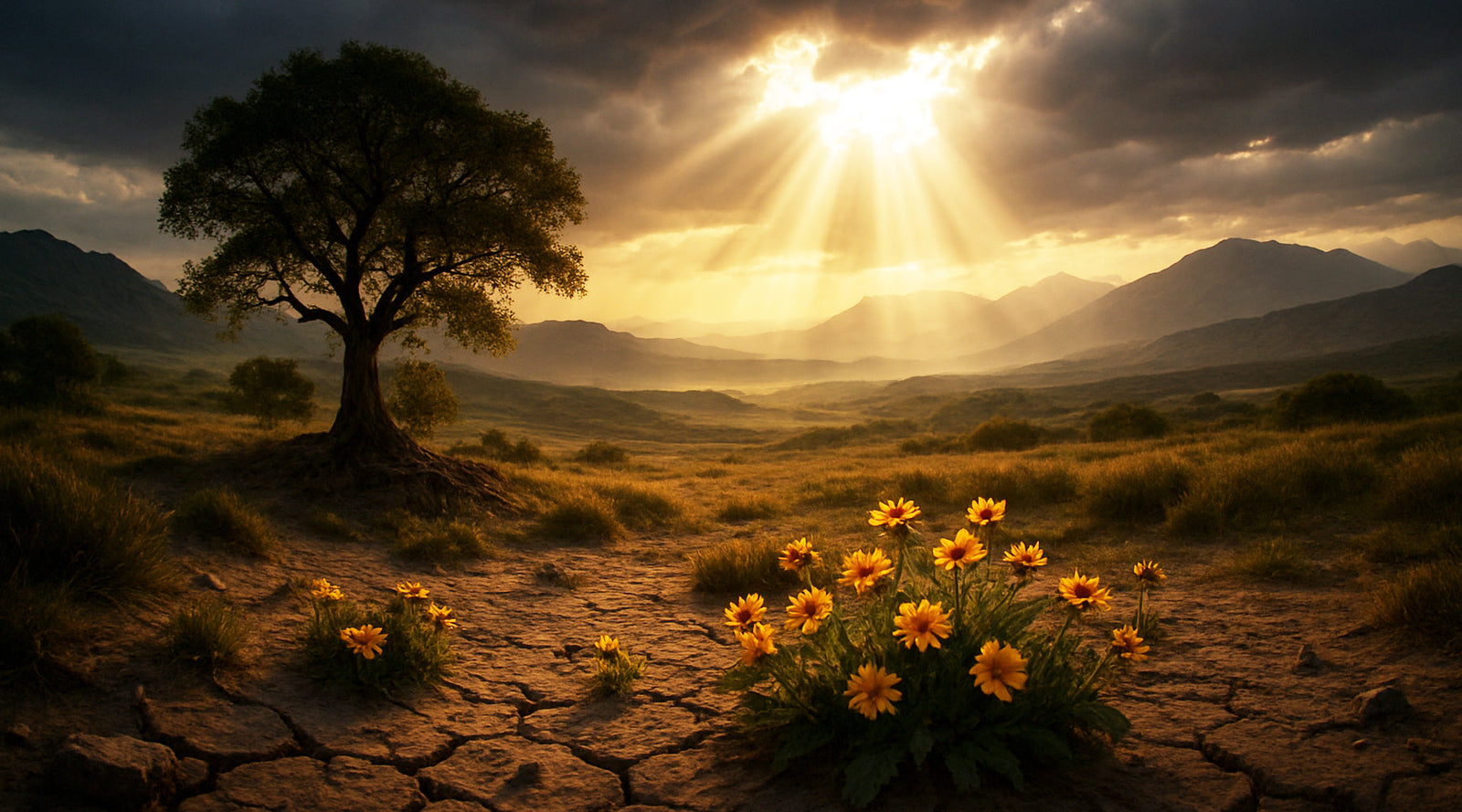Listen to this article
There is a line in Scripture, tucked like a pressed flower between timeworn pages, that strikes the soul with both serenity and sorrow: “He has made everything beautiful in its time. Also, He has put eternity in their hearts…” (Ecclesiastes 3:11).
It is a verse that floats like incense in the cathedrals of the mind, fragrant and fleeting, familiar yet fathomless. For those who’ve stared long at a sunset with aching awe, or watched a child laugh in the golden hour and felt eternity wink through the veil of now—this verse feels like a whisper from another world.
This ancient line, penned by the Preacher of Ecclesiastes—possibly Solomon, the philosopher-king—drips with the ambrosial wisdom of an old soul weathered by time. It is not optimism, nor is it despair. It is something rarer: reverence. A reverence for the rhythms of time, for the ephemerality of life, and for the beauty stitched into the seams of a seemingly fractured world. It is the philosophy of a man who has seen both banquet and famine, who has walked through courts of gold and graves of dust.
The idea that everything is beautiful in its time implies a divine choreography—an unseen Artist who crafts not chaos, but composition. Not everything is beautiful all the time. Some things ache before they sing. Some flowers bloom only to be broken by the next wind. Some lives never escape winter, yet even frost has its own fragile grace. Beauty, then, is not a possession; it is a presence, momentary and miraculous, unbottled and burning.
Across cultures and centuries, the human soul has always instinctively bowed before beauty. The Japanese, with their breathtaking concept of wabi-sabi, understood that imperfection and impermanence were not flaws to be eradicated, but features to be cherished.
A cracked teacup, its golden veins of kintsugi glimmering like scars lit by candlelight, is not less beautiful but more so because it has been broken and mended. There is a holiness in the humble, a glory in the incomplete, and wabi-sabi whispers this with every silent ceremony.
The Stoics, too, those rugged philosophers of Rome and Greece, found sublimity not in permanence but in passing. Marcus Aurelius wrote of roses withering and bread crumbling, of the breath that leaves our lungs like morning mist. And yet, he smiled. Because in the fleeting, there is focus. In knowing that we die, we learn how to live. A bloom is most beautiful not because it endures, but because it doesn’t. Its brevity is its brilliance.
Centuries later, the Romantics would reawaken this sensitivity to transient wonder. Poets like Keats and Wordsworth scrawled sonnets to daffodils and dying light, to the simple sights that, if seen rightly, become sacraments. Beauty was not confined to cathedrals; it was found in fields, in frost, in the flutter of birds. Theologians spoke of general revelation, that creation itself is a canvas that declares the glory of God—if only we have the eyes to see and the stillness to behold.
But beauty has also been politicized, contorted, commercialized. Contemporary art often writhes in the tension between the sacred and the cynical. Think of Marina Abramović, staring unblinking into strangers’ souls. Or the chaos of Basquiat, whose graffiti-spattered genius danced between cultural critique and pure aesthetic rebellion. These moments are raw, messy, human—and yet still somehow, at times, divine.
But all these philosophies—whether the serene silence of wabi-sabi, the Stoic’s sigh before death, or the modern artist’s protest—are echoes. Echoes of a truth that roared once in Galilee and wept once in Gethsemane. The truth that beauty is not merely momentary. That the eternal has entered the ephemeral. That God Himself walked in sandals and bore our brokenness—not to mock it, but to mend it.
He has made everything beautiful in its time… and yet He has also set eternity in our hearts. There’s the paradox. We ache for the infinite, but we are stuck in time. We long for a love that never ends, yet we attend funerals. We crave permanence, but we inhabit a world built of sand and smoke. And this is precisely where Jesus steps in—not as an aesthetic ideal, not as a guru, but as a Savior. Not as a metaphor, but as the Messiah.
Jesus is the eternal made flesh. The Word that painted sunsets now bleeds on a cross. The God who carved mountains now carries one on His back. And in that staggering sacrifice, He redeems not just souls but the very fabric of existence. The cross is not only a site of salvation—it is a sculpture of unspeakable beauty. Blood and glory, wood and wonder. The brokenness becomes the blessing.
In Christ, beauty is no longer just something to admire from afar—it is something to live, to embody, to anticipate. The resurrection is not just a return to life; it is the promise that one day all shall be made beautiful again. The groaning world, the cracked cup, the wasted years—redeemed. The sunsets were only a shadow; the real dawn is coming.
So, what do we do in the meantime? We look. We linger. We love. We pay attention. We find the fingerprints of God in tree bark and tear drops, in jazz riffs and jeans frayed at the hem. We do not turn our eyes away from decay, but we stare through it to the deeper glory. We live as poets and priests, curators of the Kingdom to come.
Ecclesiastes 3:11 is not just a verse. It is a vision. It dares to say that the dance of life and death, of building and breaking, of laughing and lamenting, is not meaningless. It’s a mosaic. Each shard matters. Each breath is borrowed beauty.
And so, here we are—creatures of dust with eternity in our bones. Chasing sunsets, whispering prayers, savoring coffee, burying friends, writing poems, singing hymns, brushing tears off children’s cheeks—all in time. All beautiful.
But the most beautiful thing of all? That one day, we will see Him face to face. The Artist. The Architect. The Word made flesh. And we will know—we were never waiting for time to make sense. We were waiting for Him.
And He is worth the wait.
Wearing Your Faith Starts Here — Explore Faith Mode’s Bold, Christ-Centered Apparel Now!


